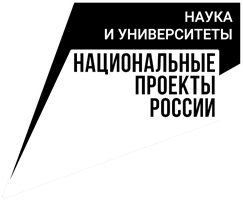| Y. Aksenov | National Oceanography Centre, UK |
| M. Luneva | National Oceanography Centre, UK |
| S. Rynders | National Oceanography Centre, UK |
| A.C. Coward | National Oceanography Centre, UK |
| V. Ivanov | Arctic and Antarctic Research Institute, The Federal Centre, St.Petersburg, Russian Federation Moscow State University, Moscow, Russian Federation |
| A.J.G. Nurser | National Oceanography Centre, UK |
| E. Popova | National Oceanography Centre, UK |
| A. Yool | National Oceanography Centre, UK |
Coupled modelling of sea ice and ocean for Arctic climate research and science applications
The changes in the Arctic environment have become a focal topic in climate news and discussions. Recent decades of summer sea ice records suggest that Arctic sea ice is on a long-term decline, with ice-free summers projected to occur by the 2030s (e.g. Assessment Reports for the Intergovernmental Panel on Climate Change, IPCC). More evidence for changes is emerging from the observational record, including changes in ocean, atmosphere, land and ecosystems. The thinning of Arctic sea ice cover and the occurrence of more open water areas in the summer result in changes to the surface ocean dynamics and heat fluxes and to the generation of more surface waves.
We present an overview and key results of the modelling development carried out at the National Oceanography Centre UK (NOC). The development focuses on a high-resolution coupled sea ice-ocean system based on the European Ocean Modelling Framework NEMO (Nucleus for European Modelling of the Ocean). The model configuration is global and includes the recently developed sea ice model under the Sea Ice Modelling Integrated Initiative (SI3) which is designed to incorporate the best available advances in sea ice physics and mechanics. The Los Alamos sea ice model: CICE is also optionally available. Other components of the model setup simulate waves-ice-ocean interactions in forced or a fully coupled WaveWatch-III-CICE-NEMO system. This, combined with a novel granular ice rheology, allows us to model fragmented ice behaviour in the Marginal Ice Zones (MIZ) and impact of that on the upper ocean.
The high-resolution modelling approach has been applied in the forward climate simulations, creating a unique capability for the climate research and impact assessments. The high-resolutions coupled and forced model projections demonstrated linked response in the sea ice and ocean systems to the changes in the anthropogenic forcing, with a potentially large-scale regime shift in the ocean towards the end of this century. The principal effect - is the change in the Atlantic and Pacific inflows, with consequences for the Arctic environment, ecosystems and global carbon cycle. New model developments are important for improving future projections and forecasting, ultimately making the Arctic safer for the environment and society.
We acknowledge funding support from the Natural Environment Research Council UK and the Department for Business, Energy and Industrial Strategy (BEIS) under the United Kingdom & Russia Arctic Bursaries Programme, from the project APEAR (NE/R012865/1) jointly funded by UKRI Natural Environment Research Council (NERC) with the German Federal Ministry of Education and Research (BMBF) and from the NERC ACSIS Programme (NE/N018044/1).

